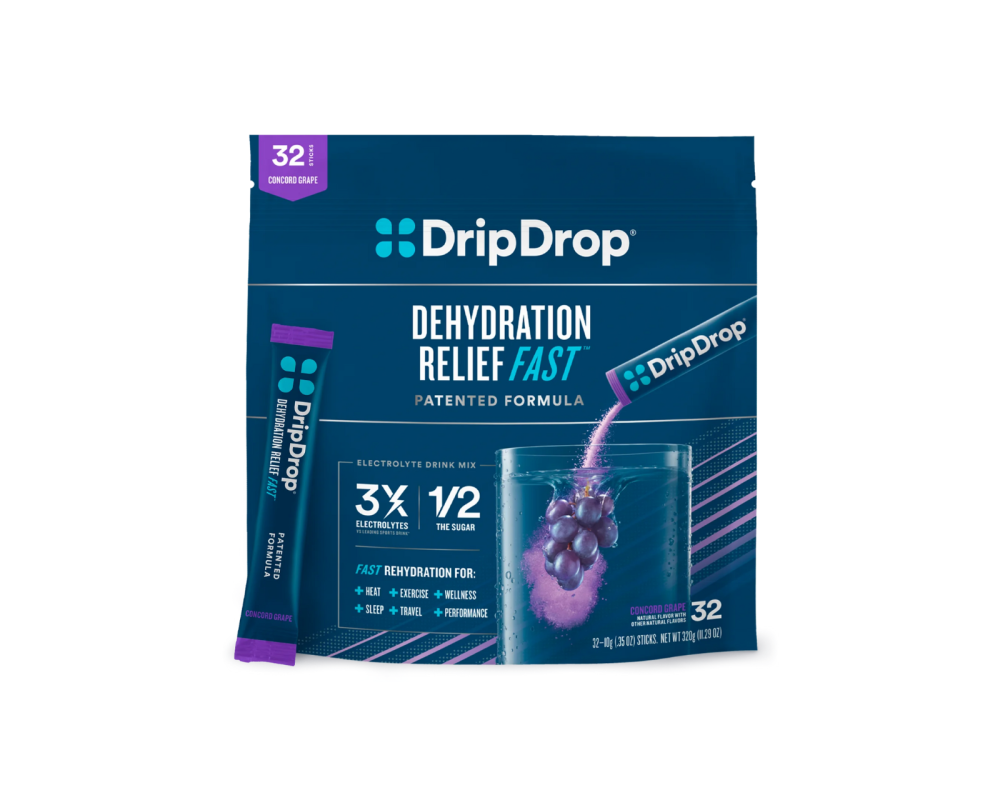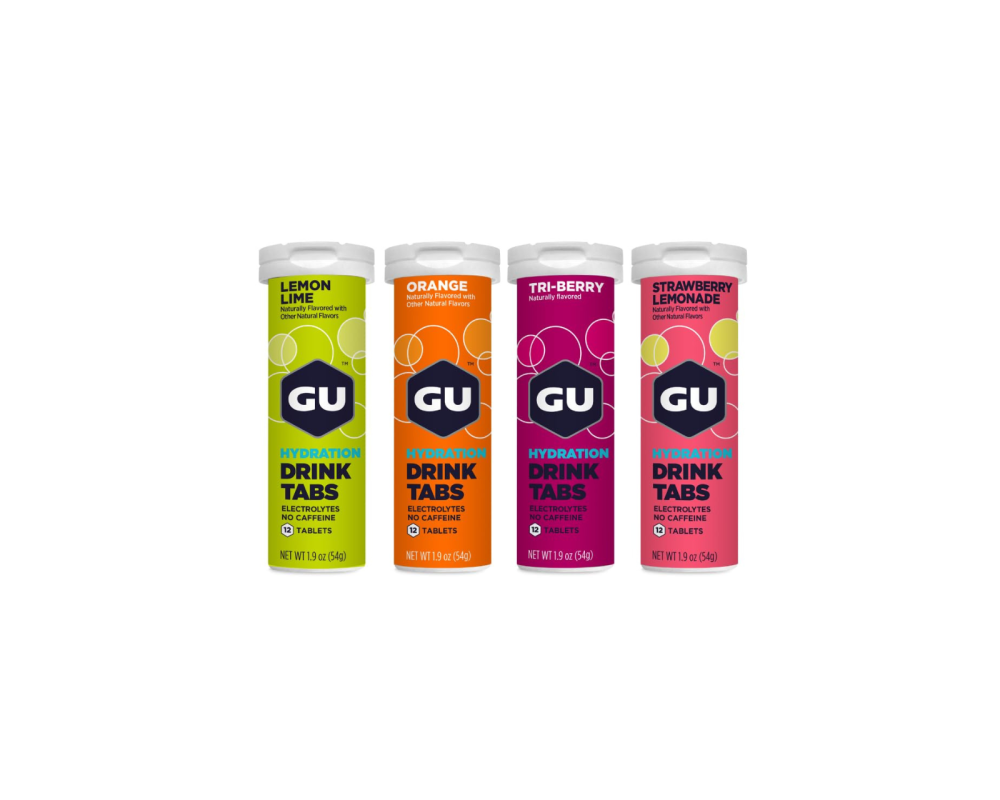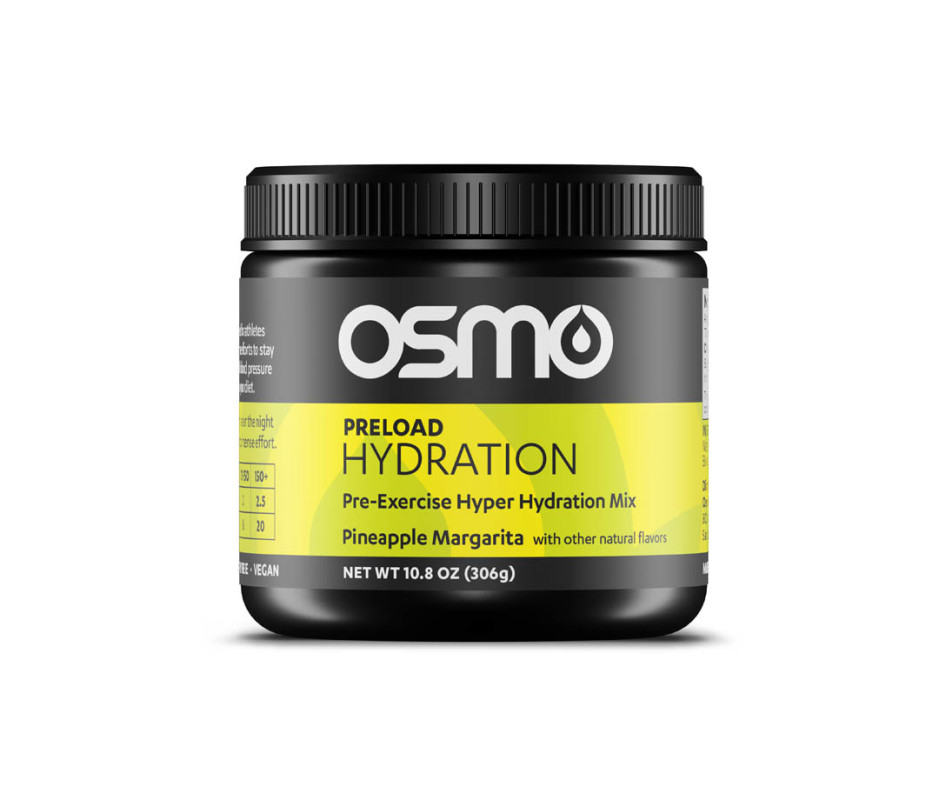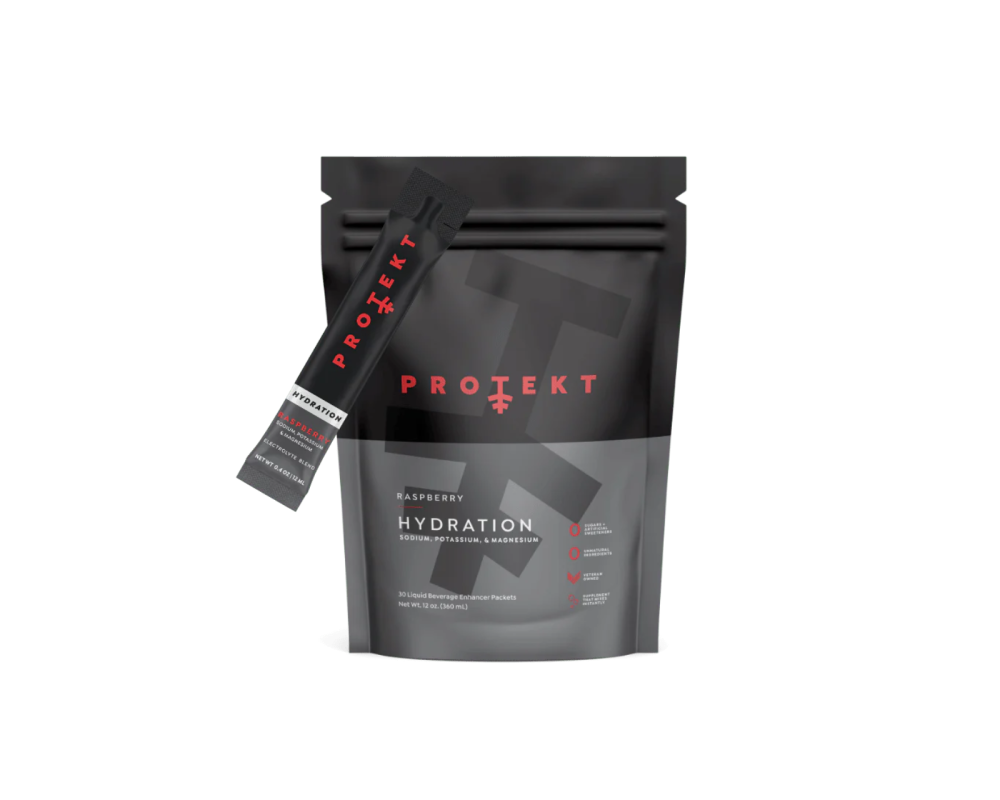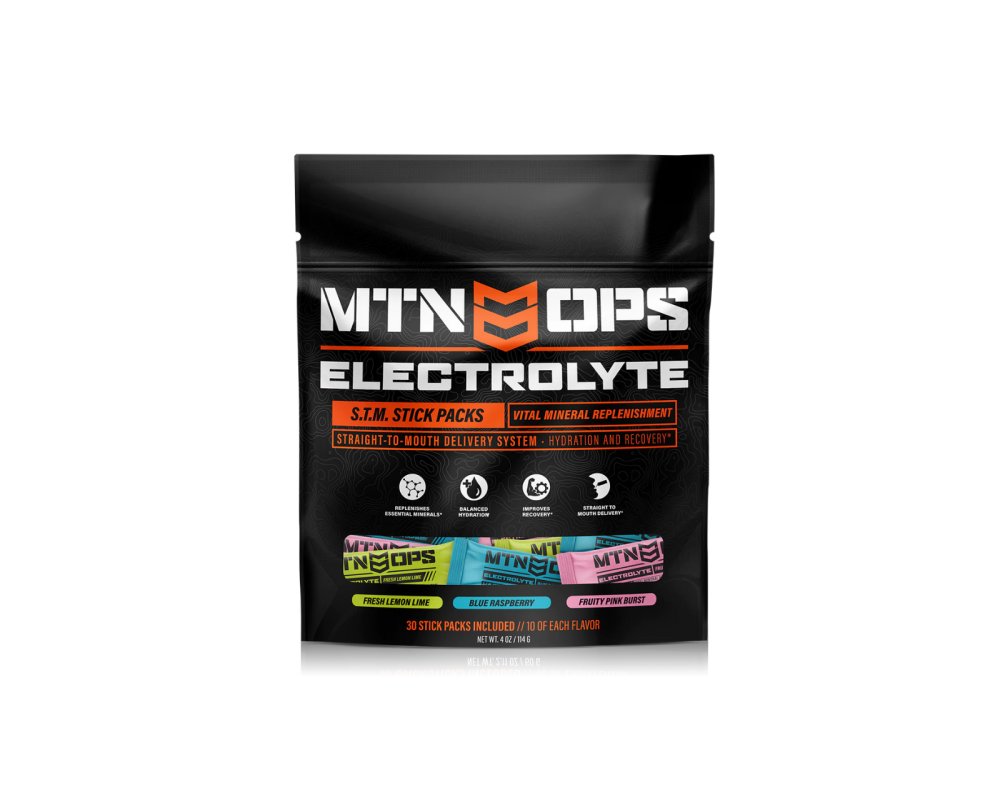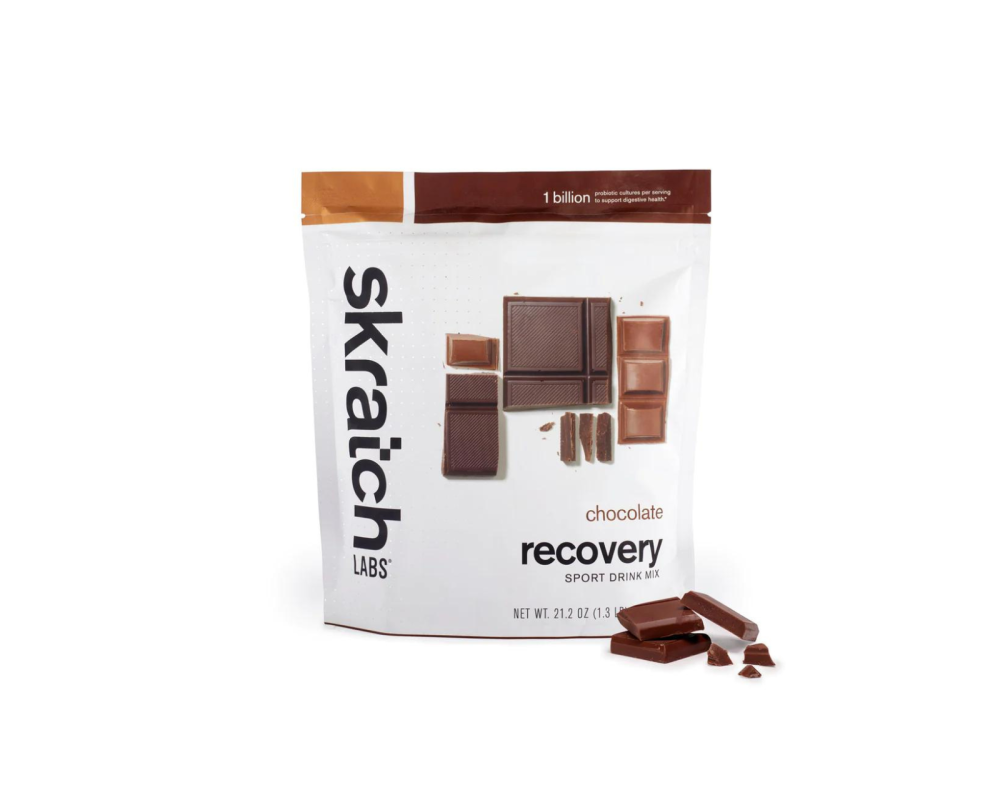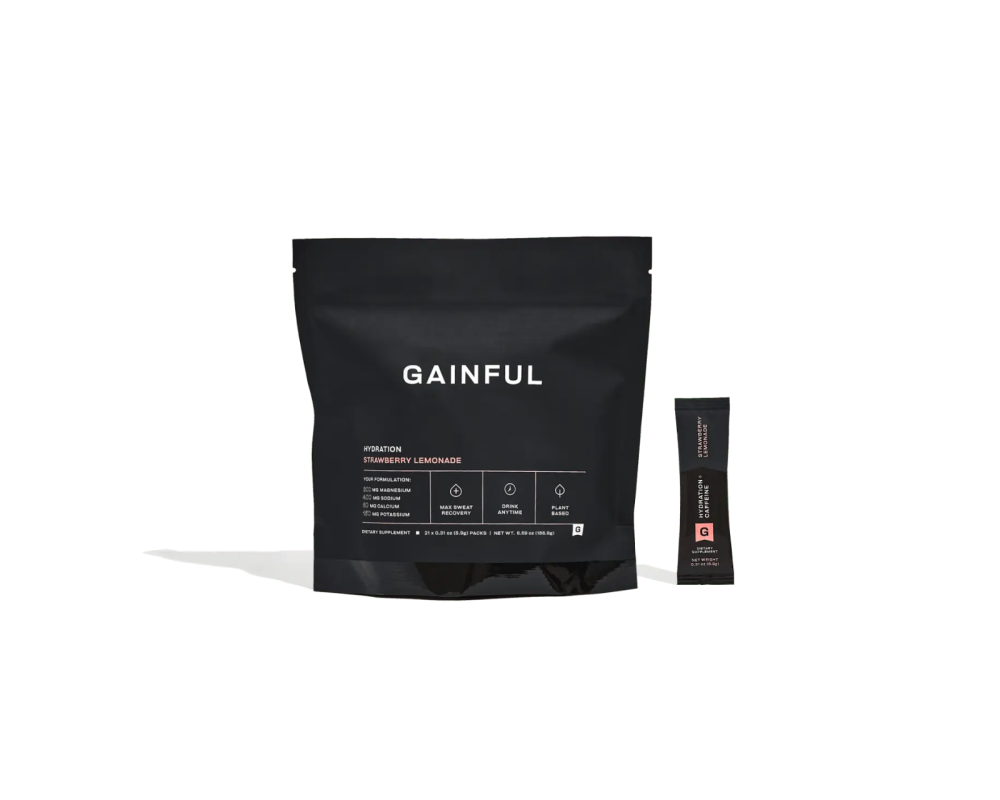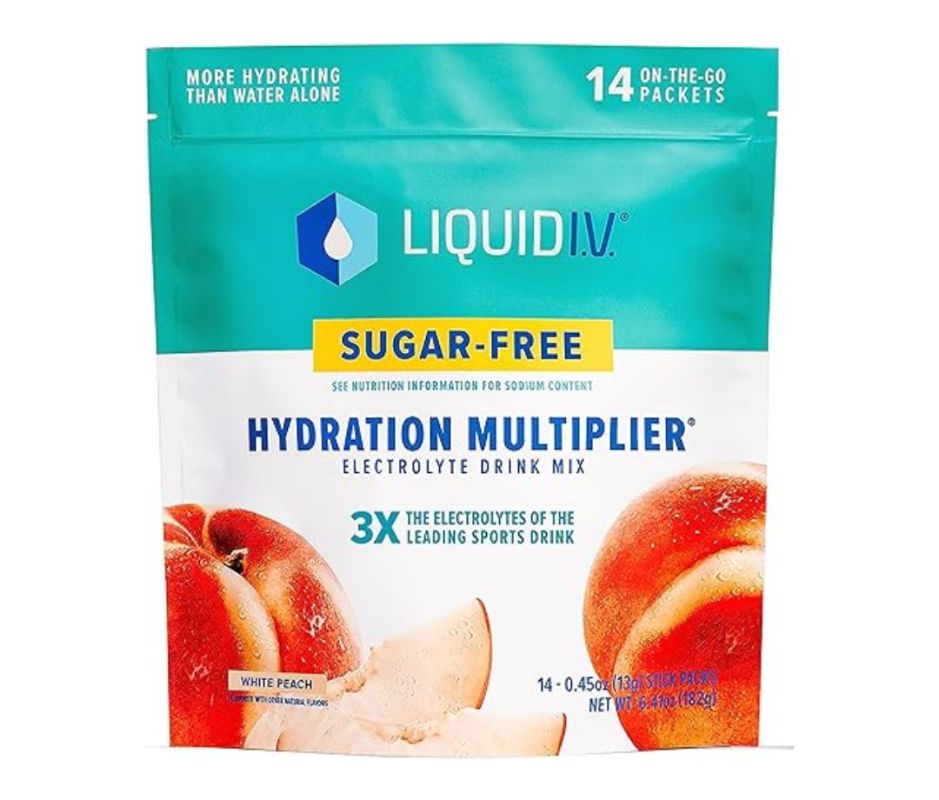Health
The 13 Best Hydration Drinks and Drink Mixes

You’ve probably received the message by now: hydration is important. And although the eight glasses per day rule of thumb doesn’t hold water, dehydration can impact your health and hold back your physical performance—regardless of whether you’re a serious athlete or everyday gym-goer.
As great as plain old water is, we’ve known for decades that exercise strips the body of electrolytes in addition to H2O. So, if you’re working out hard, your body also needs to replace salt, potassium, and sometimes calories. While most beverages other than water count toward your overall fluid intake, exercise demands the type of replenishment that beer, chocolate milk, and coffee aren’t always well-suited for.
Hydration-focused drinks like Gatorade have been on sidelines for decades, but today there are dozens of powders, liquid concentrates, and ready-to-drink bottles available to meet your hydration needs. Knowing which one is right for you and your lifestyle isn’t easy.
Luckily, we tested dozens of hydration drinks; analyzed their nutritional contents, flavor, ease-of-use, and cost; and chose our favorites across a range of formats, prices, and applications. Our favorite? Skratch Labs Hydration Mix.
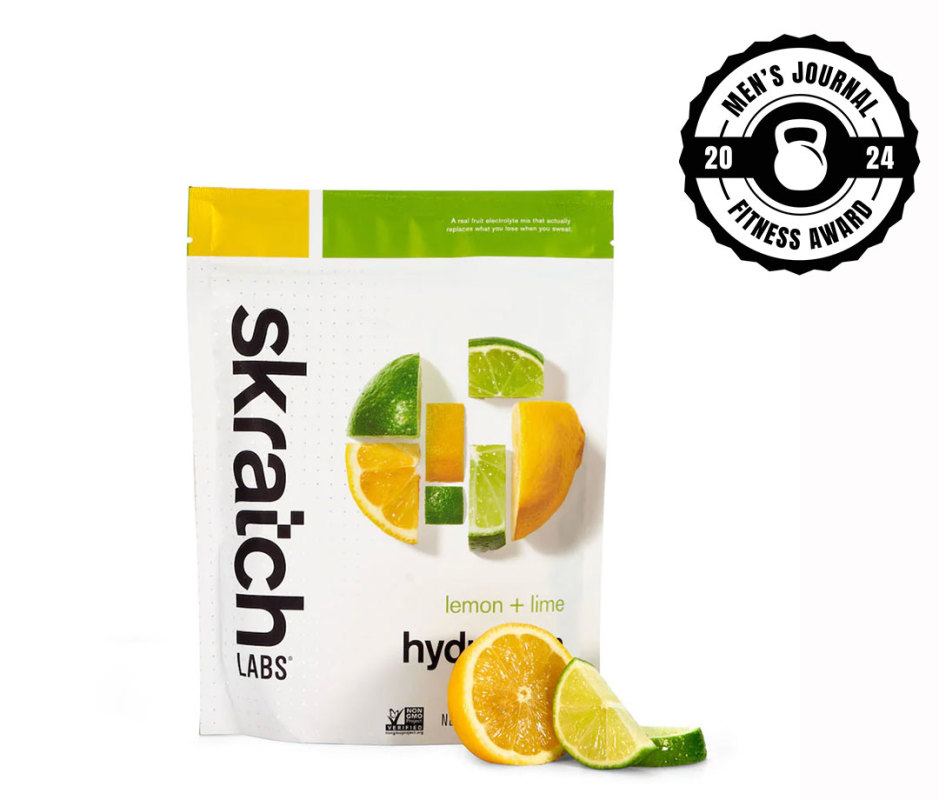
Courtesy Image
Best Overall Hydration Drink: Skratch Labs Hydration Powder
Skratch Labs Hydration Powder was initially developed by a sports scientist and cycling coach who diluted sugary sports drinks and beefed up the electrolyte content to better fuel his athletes without upsetting their stomachs. Skratch is now one of the most popular hydration mixes for athletes thanks to a time-tested ratio of electrolytes and just enough sugar for fuel and to increase water uptake. There aren’t a lot of bonus ingredients here. Just 4g of sugar to help absorption of water and the exact ratio of electrolytes most people lose in their sweat. There are 6 flavors and I enjoy all of them, though Strawberry Lemonade and Pineapple are favorites. The cost per serving for their bulk bags is much cheaper than bottled drinks and most other individual drink powder packets, making it a staple choice for any athlete’s cupboard.
- TYPE: Powder
- CARBS PER SERVING: 20g
- FLAVORS: Strawberry Lemonade, Lemon + Lime, Raspberry Limeade (caffeinated), Fruit Punch, Orange, Pineapple
Best Hydration Drink for Athletes: Gnarly Fuel2O Endurance Nutrition
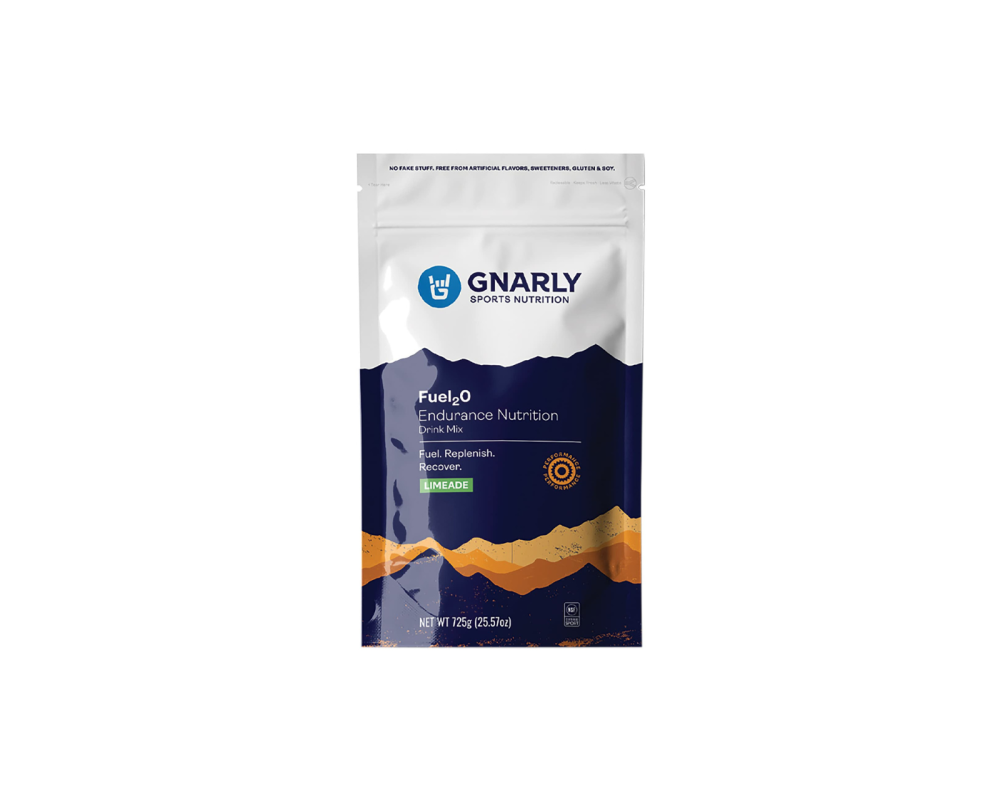
Courtesy Image
Getting a significant amount of calories in your hydration drinks becomes more important after about 60 minutes of exercise, so many drink powders aimed at endurance athletes pack in extra sugar as fuel. Gnarly Fuel2O delivers 100 calories in each serving, mostly in the form of 25 grams of sugar in the form of dextrose and sucrose—more than 5 times what’s in a serving of Gnarly’s standard hydration mix. In longer bouts of exercise and races, performance becomes as much about efficient fueling as anything else, and Fuel2O provides a baseline of calories while still replacing lost electrolytes.
- TYPE: Powder
- CARBS PER SERVING: 25g
- FLAVORS: Cherry Cola (caffeine), Limeade, Tropical
Best Value Hydration Drink: Zeal Naturals Enhanced Electrolytes
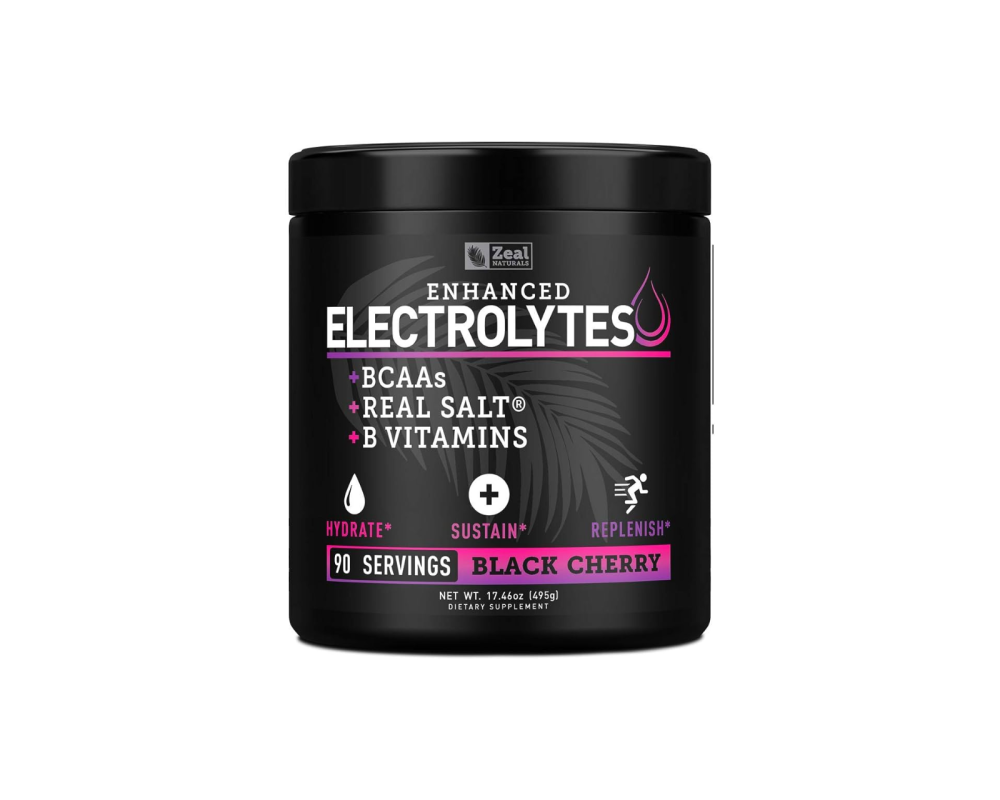
Courtesy Image
Zeal Naturals Enhanced Electrolytes is on a subscription order for my household and we use it as a low-cost flavor enhancer to our water that just happens to have B vitamins, BCAAs, as well as a range of electrolytes. The cost per ounce is a bit higher than products such as Skratch, but because there is no added sugar, you’re essentially just paying for the electrolytes and micronutrients. (I’ve added small amounts of sugar when adding water to make the Zeal product more of an exercise fuel, but it’s stevia-sweetened already, so the flavor can be strong). The ratio of sodium to potassium is close to 1:1 so it’s not a perfect blend. But for the cost, it’s close. And I personally tend to fuel with a lot of salty snacks, such as salted nuts and pickles, which crank up my sodium intake throughout the day without needing any from drink powders. There are electrolyte powders out there with better ratios, but for the price, it’s hard to beat this sugar-free mix.
- TYPE: Powder
- CARBS PER SERVING: 0g
- FLAVORS: Strawberry Lemonade, Black Cherry, Lemon + Lime, Raspberry Limeade (caffeinated), Fruit Punch, Orange, Pineapple
Best Bottled Hydration Drink: Gatorade Fit Real Healthy Hydration
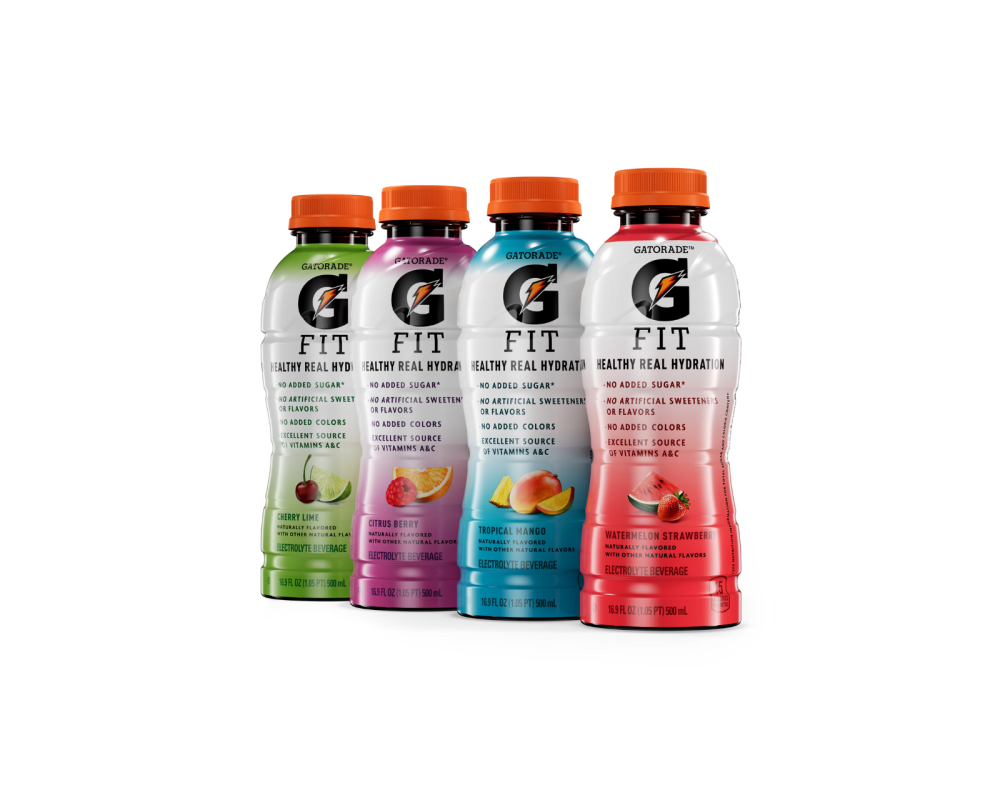
Courtesy Image
Original Gatorade gets a bad rap for being high in sugar and containing artificial colorings, so the company introduced a wide range of new products in recent years, including Gatorade Fit. The product provides a modest 3 grams of carbs from watermelon juice concentrate. It’s electrolyte profile is also much closer to what is lost in sweat than the original, so this is a great option when you’re looking for the convenience of a bottled liquid hydration drink. Because Gatorade is ubiquitous, you’re much likely to find it in a convenience or grocery store in a pinch and if you grab a case to keep in your fridge, you’ll always have an easy grab-and-go hydration drink close at-hand.
- TYPE: Bottled drink
- CARBS PER SERVING: 3g
- FLAVOR: Watermelon Strawberry, Blackberry Raspberry, Cherry Lime, Citrus Berry, Tropical Mango
Best Hydration Drink for Hangovers: Hydrant Electrolyte Hydration Powder
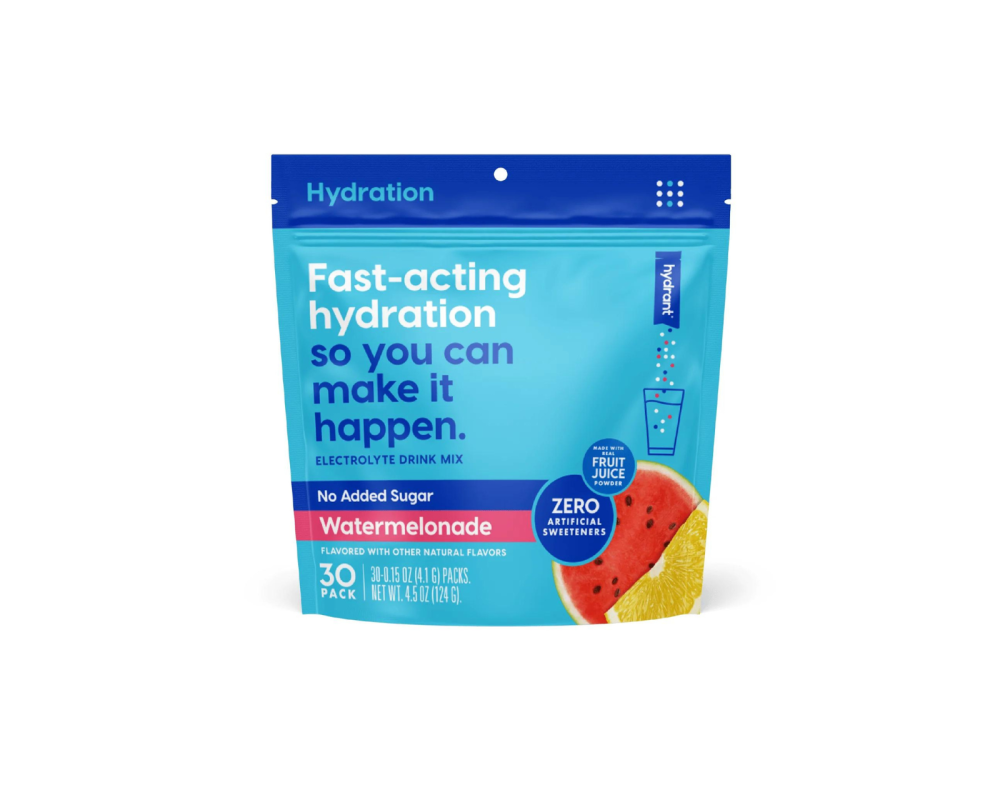
Courtesy Image
While scientists don’t fully understand what causes hangovers or how to get rid of them, dehydration is a common symptom. While Sunday morning zombies have traditionally reached for Gatorade or Pedialyte, Hydrant Hydration Powder has much less sugar, no artificial colors, and a lot more of the electrolytes your body needs. It also packs in caffeine from green tea plus L-Theanine to give you a boost of energy when you’re running on limited, alcohol-compromised sleep. The sodium-to-potassium ratio isn’t as ideal for athletes sweating heavily, but provides a solid boost for weekend warriors trying to get back on their feet.
- TYPE: Powder
- CARBS PER SERVING: 0g
- FLAVORS: Watermelonade, Fruit Punch, Blood Orange, Lemon Lime
More Hydration Drinks We Love
Best-Tasting Hydration Drink: DripDrop Electrolyte Powder
This hydration mix was developed by a doctor after he witnessed the deadly effects of dehydration while on a humanitarian mission. DripDrop Electrolyte Powder delivers three times the sodium content of traditional sports drinks, so it’s targeted hydration, not a sweet drink to enjoy because you went for a jog. Still, the just slightly salty mouthfeel is welcome in your water bottle if you’re sweating and craving salt—it’s not pickle juice. Obviously taste is very subjective, especially for athletes, as anyone who’s hung out in a marathon aid station can attest. But I love the simple options in their Classics variety pack, and the 9 grams of sugar is low enough to enjoy it simply as a flavor enhancer without feeling like you’re drinking a classic Coke. The powder comes in serving size packets meant to be mixed with 8 ounces of water and are easy to toss in your car or gym bag so you always have some on-hand when you need it.
- TYPE: Powder
- CARBS PER SERVING: 9g
- FLAVORS: Grape, Cherry, Fruit Punch, Strawberry Lemonade
Best Electrolyte Tablets: GU Energy Hydration Drink Tabs
As a soda water addict, sometimes I just want carbonation. I’ve gone so far as to cart La Croix cans to the top of 14,000-foot peaks. For that same feeling with an added electrolyte punch, I use GU Energy Hydration Drink Tabs. They’re like those old alkaseltzer fizzing tablets, making plain water just that little bit more interesting. Plus, they deliver the right amount of key electrolytes and BCAAs. If you’re worried about drinking carbonation during a hard workout, I should note the slight fizziness comes nowhere near a belch-inducing canned drink, and GU says the subtle fizz can actually help athletes who struggle with stomach upset from other products.
- TYPE: Powder
- CARBS PER SERVING: 3g
- FLAVORS: Raspberry Lemon Lime, Orange, Tri Berry, Strawberry Lemonade
Best Pre-Exercise Hydration Drink: Osmo Preload Hydration Powder
While most hydration drinks attempt to address dehydration as it happens, Osmo Preload Hydration Powder helps you beat dehydration before you start an intense workout. A serving of the powder delivers more than half of the recommended daily allowance of sodium which helps saturate your sodium stores and retain as much water as possible ahead of an intense workout. For serious athletes preparing for a max-effort workout or race, it can get you a leg up in the battle against dehydration.
- TYPE: Powder
- CARBS PER SERVING: 9g
- FLAVOR: Pineapple Margarita, Blackberry, Lemon Lime
Best Liquid Concentrate: Protekt Electrolyte Hydration Packets
Some powders struggle to fully dissolve in water, so you can be left with an intense shot of grainy sludge if you haven’t taken the time to properly shake or stir your mix in your water bottle. Protekt Hydration electrolyte delivery system comes in the familiar stick tube packaging but it’s a hyper-concentrated electrolyte liquid that simply needs to disperse in your water instead of dissolve. The electrolyte profile is excellent as well, focusing on salt with lesser amounts of magnesium and potassium. It’s a zero-sugar option sweetened with stevia, and I enjoy it both as an easy water enhancer for daily hydration and as a workout hydration drink.
- TYPE: Liquid concentrate
- CARBS PER SERVING: 0g
- FLAVORS: Raspberry, Lemonade, Watermelon
Best No-Mix Powder: Mtn Ops STM Electrolyte Stick Packs
For times when you want to replenish electrolytes but don’t want to take in a lot of fluids, there’s Mtn Ops STM (Straight to Mouth) Electrolyte Stick Packs. These small packets tear open and you pour the intense Sweet Tart-like powder onto your tongue for a blast of flavor, electrolytes, vitamins, and trace minerals. There’s not a lot of sodium here, so it’s less of a during-exercise hydration powder than an electrolyte and mineral supplement to your regular hydration. Because it tastes like candy thanks to non-caloric sweeteners erythritol, malic acid, and sucralose, I treat it as a guilt-free late night treat with benefits when I know my body needs extra help with hydration and recovery.
- TYPE: Direct-feed powder
- CARBS PER SERVING: 0g
- FLAVORS: Fruity Pink Burst, Blue Raspberry, Fresh Lemon Lime
Best Post-Workout: Skratch Labs Recovery Mix
Most lifters and athletes know protein is key to muscle-building and recovery. But even everyday people struggle to get enough in their diet. If you’re a bodybuilder used to eating three chicken breasts for dinner, you’re doing fine. But carb-loading endurance athletes often come up short of the recommended 0.8 grams of protein per pound of bodyweight. Skratch makes it easy to add some baseline protein with their Recovery Mix, which blends hydration via electrolytes and recovery via protein, sugar, and fat calories. The eight grams of protein is less than most protein bars, but keep in mind this isn’t supposed to supplant dietary protein and supplemental protein powders. The Recovery blend is designed to push some nutrition and electrolytes back into your body quickly after a hard workout when you’re thirsty and may not have much appetite.
- TYPE: Powder
- CARBS PER SERVING: 35g
- FLAVORS: Strawberries & Cream, Chocolate, Vegan Chocolate, Coffee, Horchata
Best Personalized Hydration Powder: Gainful Hydration Mix
Gainful is an interesting option for athletes that want to personalize their hydration drink powder. On the Gainful website, you can tweak a custom hydration powder blend to have medium or high electrolyte content based on your workout intensity. You can also add or omit caffeine, adjust the quantity, and select your flavor. Gainful has a subscription option that includes unlimited access to nutritionists and the ability to customize a whole suite of supplements from protein powders to creatine and collagen supplements. Take their quiz to get recommendations for a complete subscription package.
- TYPE: Powder
- CARBS PER SERVING: 2g
- FLAVORS: Tropical Mango, Strawberry Lemonade, Lemon Lime
Best Zero Sugar: Liquid I.V. Sugar-Free Hydration Multiplier
Liquid I.V. Sugar Free has three times the sodium content of traditional sports drinks, so it’s targeted hydration, not a sweet-tasting drink to enjoy because you went for a jog. Still, this zero-sugar formulation is great for keto dieters and anyone watching their carbohydrate intake that still wants to replenish electrolytes lost to sweating. The problem with unsweetened hydration drinks is that most aren’t as effective since sugar helps the body absorb water. Thankfully, Liquid I.V. attempts to address this shortcoming through a proprietary blend of allulose and amino acids that they say helps the mix hydrate better than plain water. The sweetener used is allulose and I find that it comes the closest to real sugar so you aren’t left with the aftertaste that I pick up from Stevia and artificial sweeteners.
- TYPE: Powder
- CARBS: 5g
- FLAVORS: White Peach, Lemon Lime, Green Grape, Raspberry Melon
Why You Should Trust Me
I stay active year-round, mostly in a rotation of mountain biking, gym workouts, and backcountry and resort skiing. Aside from the gym workouts, these activities are lengthy endurance sports—the sort which have me sweating enough to need electrolyte and calorie intake before, during, and after exercise. I make an effort to try as many different hydration products as possible throughout the year.
My Testing Process
For this article, I tested more than a dozen unique products, in addition to the hydration drinks I was already familiar with through previous testing. I tested the drinks around bouts of exercise but also performed “taste tests” to compare the products side-by-side, focusing on flavor and observing how the powders dissolve.
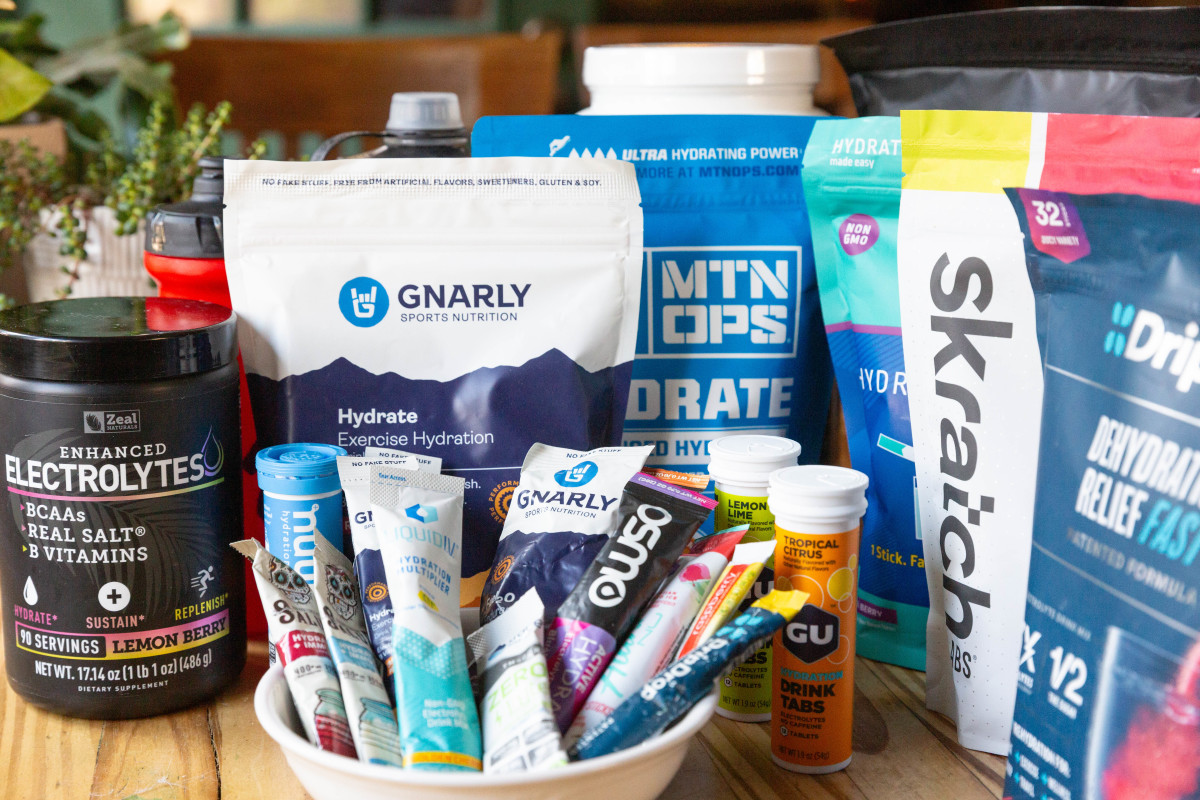
Justin Park
What to Look for When Buying Hydration Drinks
Electrolyte Content
Uri Carlson of Inner Wild Nutrition, registered dietician nutritionist (RDN) based in Breckenridge, CO, has a trick for knowing when to use hydration drinks instead of water: “Anytime you’re sweating, drink electrolytes. It doesn’t matter if you’re mowing the lawn or going for a run,” she told Men’s Journal.
When you perspire, you lose electrolytes, Carlson says. You mainly sweat out sodium, otherwise known as salt. To a lesser extent, you also want to replace potassium—but in a ratio of about 10-to-one salt to potassium. She points to the electrolyte content of our top overall pick, Skratch Labs Hydration Mix, as a good benchmark for totals of each in the right ratio: about 400mg of sodium and 100mg or less of potassium.
Many hydration drinks pad their ingredients lists with other electrolytes and add-ons like BCAAs, B vitamins, and other healthy-sounding buzzwords. Therefore, Carlson cautions athletes to keep it simple, as more ingredients create more opportunities for stomach issues. Sodium and potassium are the only essentials that need to be replaced during exercise, while most other micronutrients and electrolytes are addressed by a healthy diet.
Sugars and Non-Caloric Sweeteners
Hydration drinks traditionally include carbohydrates in some form of sugar. Not only does this improve taste, but it also provides some nutrition and actually increases how quickly and how much water you can absorb. Original Gatorade has 14 grams of sugar per 8-ounce serving, while Skratch, for example, has closer to 10 grams per 8 ounces.
Zero sugar drinks can be a great option for hydrating without taking in calories when you’re not as active or if you’re following a carb-restrictive diet such as keto, though you’ll forgo the hydrating impact of actual sugar. Most of these drinks use some kind of non-caloric sweetener to improve the taste. Stevia and monkfruit are common naturally derived options, but artificial sweeteners like sucralose and aspartame are also popular. Just keep tabs on how your body tolerates any sweetener, as real sugar as well as the various non-caloric sweeteners can cause stomach problems. And be aware that in extreme amounts, these artificial options may present some health concerns.
Related: We Reviewed the Year’s Best Hydration Packs—Including Our Overall Favorite
Types of Hydration Drinks
Bottled hydration drinks are popular for quick shopping at the supermarket or corner store. But we don’t recommend ordering bottles directly to your home. When you order a case online, not only do you create unnecessary waste by piling up plastic, but you also pay more per fluid ounce compared to powder or liquid concentrates. Although drink mixes aren’t as convenient as grab-and-go bottles, they’re an efficient choice for online shoppers.
Powders also allow you to adjust the strength of your mix. If you want more electrolytes for a harder workout, add more mix. Or, if you want light flavoring and less electrolytes for everyday hydration, add less mix.
There are many more powdered hydration mix options than bottled drinks, which often don’t have ideal electrolyte ratios. The wealth of powdered options means you can try different formulas and flavors until you find the mix that suits your workouts and taste buds.

Health
The Hazards and Blessings of Being Male: Embracing the Seven Challenges For a Successful Life

Although there have been infinite varieties of life forms that have evolved on Earth in the last 4 billion years, two life forms that are our male and female ancestors evolved a billion years ago. Here’s how this first sexual experience occurred according to cosmologist Dr. Brian Swimme and historian Dr. Thomas Berry in their book, The Universe Story.
The first male organism—they call him Tristan—and the first female organism—they call her Iseult—began life in the ancient oceans. Swimme and Berry describe their chance encounter this way:
“They were cast into the marine adventure, with its traumas of starvation and of predation. Able to nourish themselves but no longer capable of dividing into daughter cells, such primal living beings made their way through life until an almost certain death ended their 3-billion-year lineage.
A slight, an ever so slight, chance existed that a Tristan cell would come upon a corresponding Iseult cell.They would brush against each other, a contact similar to so many trillions of other encounters in their oceanic adventure. But with this one, something new would awaken. Something unsuspected and powerful and intelligent, as if they had drunk a magical elixir, would enter the flow of electricity through each organism.
Suddenly the very chemistry of their cell membranes would begin to change. Interactions evoked by newly functioning segments of her DNA would restructure the molecular web of Iseult’s skin, so that an act she had never experienced or planned for would begin to take place—Tristan entering her cell wholly.”
Of course no humans were there to record this original encounter, but we all have origin stories and this one resonates with me. Dates are never exact and change as more information is gathered. Here are some additional dates I found important in The Universe Story timeline:
- 12 billion years ago, the universe begins.
- 4 billion years ago life first emerges.
- 1 billion years ago sexual reproduction evolves.
- 216 million years ago the first mammals appear.
- 30 million years ago the first apes inhabit the earth.
- 2.6 million years ago the first humans appeared.
- 200,000 years ago Archaic Homo sapiens evolved.
- 10,600 years ago first settlements in the Middle East emerged and wheat and barley were cultivated.
Needless to say, we have a long evolutionary history to embrace. In their book, Solving Modern Problems with a Stone-Age Brain, Douglas T. Kenrick, PhD and David E. Lundberg-Kenrick describe seven evolutionary challenges we must all face and embrace. They offer a visual summary as a revision of Maslow’s original Hierarchy of Human Needs which they call The New Pyramid of Human Motives:

The Seven Challenges for a Successful Life
During the billion years of life, all organisms must embrace these challenges and they are particularly relevant beginning with our mammalian history. In their book, the Kenricks ask, “What are the fundamental problems of human existence?” They go on to share the results of their research.
“Together with a large team of researchers at more than 30 universities on five continents, we have been investigating the universal motivations faced by human beings around the globe.”
Here is a summary of their findings:
We must meet our basic physiological needs for shelter from the elements,
water, and food.
- Protect yourself from attackers and plunderers.
Given the scarcity of resources and the ever-present possibility of starvation, there has always been competition among different groups (most often the male members) for precious real estate and resources (including access to females).
As the Kenricks remind us. “Our ancestors were not rugged individualists.
They need to band together not only to protect themselves from bands of
marauding bad guys but also to accomplish most of the tasks of everyday life.”
Some people have always been more resourceful and clever than others and
some were more willing to bravely defend their groups against armed marauders.
Those resourceful and courageous individuals won higher status and gained
greater respect.
“From the perspective of evolution by natural selection,” say the Kenricks, “this
step is essential. Every one of our ancestors managed to attract at least one
person who wanted to make with them. Not everybody in the ancient world got
to reproduce, though, and a reasonable percentage of men went unmated.” This
fact, is of major importance when understanding male desires, fears, and
behavior.
From an evolutionary perspective, we not only have to find a mate who will have
sex with us, but we need to hold on to our mate long enough to have a child and
raise the child to maturity, so they can find a mate and continue the process.
- Care for your family members.
Unlike other animals, human males are much more involved with raising children, since human children require long-term care before they reach reproductive age.
Males and Females Are Alike and Also Different
Males and females are alike in that they must both successfully meet the seven challenges noted above. However, there are also significant evolutionary differences. These differences first came home to me when I first met psychologist David M. Buss and read his book, The Evolution of Desire: Strategies of Human Mating.
“If mating desires and other features of human psychology are products of our evolutionary history,” says Dr. Buss, “they should be found universally, not just in the United States.”
To test his theories, he conducted a five-year study working with collaborators from thirty-seven cultures located on six continents and five islands. All major racial groups, religious groups, and ethnic groups were represented. In all, his research team surveyed 10,047 persons world-wide.
Dr. Buss concluded that there are actually two human natures, one male, the other female. What do women really want? Buss found that the top three qualities that women look for in men are exactly the same as those things that men look for in women: Intelligence, kindness, and love. Then, what women want diverges from what men want.
“Women then look at a man’s ability to protect her and her children, his capacity to provide, and his willingness to make commitment to a relationship,” says Buss.
What do men really want?
“A man is drawn to youth and beauty,”
says Buss.
“This interest is not just a modern desire driven by advertising and male desire to control women [though advertisers take advantage of our evolutionary-driven desires]. It is a universal desire based on evolutionary pressures for reproductive success. Men who mated with women who were incapable of bearing children left no ancestors. Every man alive today is descended from men who did not make that mistake. Worldwide, men are drawn to younger women.”
Note: Just because we have these evolutionary-based desires does not mean we must act on them, that they are good for us, or will make us, or the partners we desire, happy. It also does not mean they are hard-wired into our biological makeup and can’t be changed. It does mean that we must take seriously our evolutionary-based desires and listen to the ancient “whisperings within” that pull us in certain directions.
The Hazards and Blessings of Gender-Specific Health
The ancient Roman philosopher, Virgil offers a simple truth to consider.
“The greatest wealth is health.”
A modern American medical doctor, Marianne J. Legato, M.D., world-renowned cardiologist and founder of The Foundation For Gender-Specific Medicine, says,
“The premature death of men is the most important—and neglected—health issue of our time.”
Although human males, as a group, occupy more positions of power in government and business than women, it has come at a price. This was first brought home to me by psychologist Herb Goldberg, in his book 1976, The Hazards of Being Male.
“The male has paid a heavy price for his masculine ‘privilege’ and power. He is out of touch with his emotions and his body. He is playing by the rules of the male game plan and with lemming-like purpose he is destroying himself—emotionally, psychologically and physically.”
In recent years we have learned a lot more about the realities of being male.
“If it’s true that men rule the world, it comes at a heavy cost,”
says Dr. Legato.
“From conception until death, men are inherently more fragile and vulnerable than women. In virtually every society today, men die first.”
Dr. Legato offers the following facts of life:
- The male fetus is less likely to survive the womb than the female.
- Boys are six weeks behind in developmental maturity at birth compared to girls.
- Men have four times the developmental disabilities of females.
- Men suffer more severely than women from seven of the ten most common infections that human experience [Including Covid-19].
- Men are likely to experience the first ravages of coronary artery disease in their mid-thirties, a full 15 or 20 years before women.
- Twice as many men die of heart disease, the leading cause of all deaths, than do women.
- Men die by suicide 4 times more than women.
- Murder and homicide are among the top four killers of men from the time they are born until heart disease and cancers begin to claim those who survive into middle age.
Accepting the realities of our own inherent weakness and vulnerabilities instead of trying to pretend we are masters of the universe is the first step we just take to begin our own healing and recovery.
I have been writing a series of articles on the Future of Men’s Mental Health. In Part 3, “Gender-Specific Healing and Man Therapy,” I explore my own healing journey and issues that address the unique problems faced by men and how the emerging field of Gender-Specific Healing and Men’s Health is a key to the future of health care. If you’d like more information about upcoming trainings, drop me an email to Jed@MenAlive.com and put “Gender-Specific Health Training” in the subject line.
Health
Healthy No-Bake Peanut Butter Bliss Balls

This post may contain affiliate links. As an Amazon Associate, I earn from qualifying purchases. Please read my disclosure.
My no-bake, healthy peanut butter bliss balls are loaded with creamy peanut butter and chocolate flavor, making them a hit with both kids and adults alike. Enjoy these as an on-the-go breakfast, wholesome snack, or healthy dessert alternative! They’re also dairy-free, vegan, gluten-free, and low in sugar, making them ideal for a variety of dietary preferences.
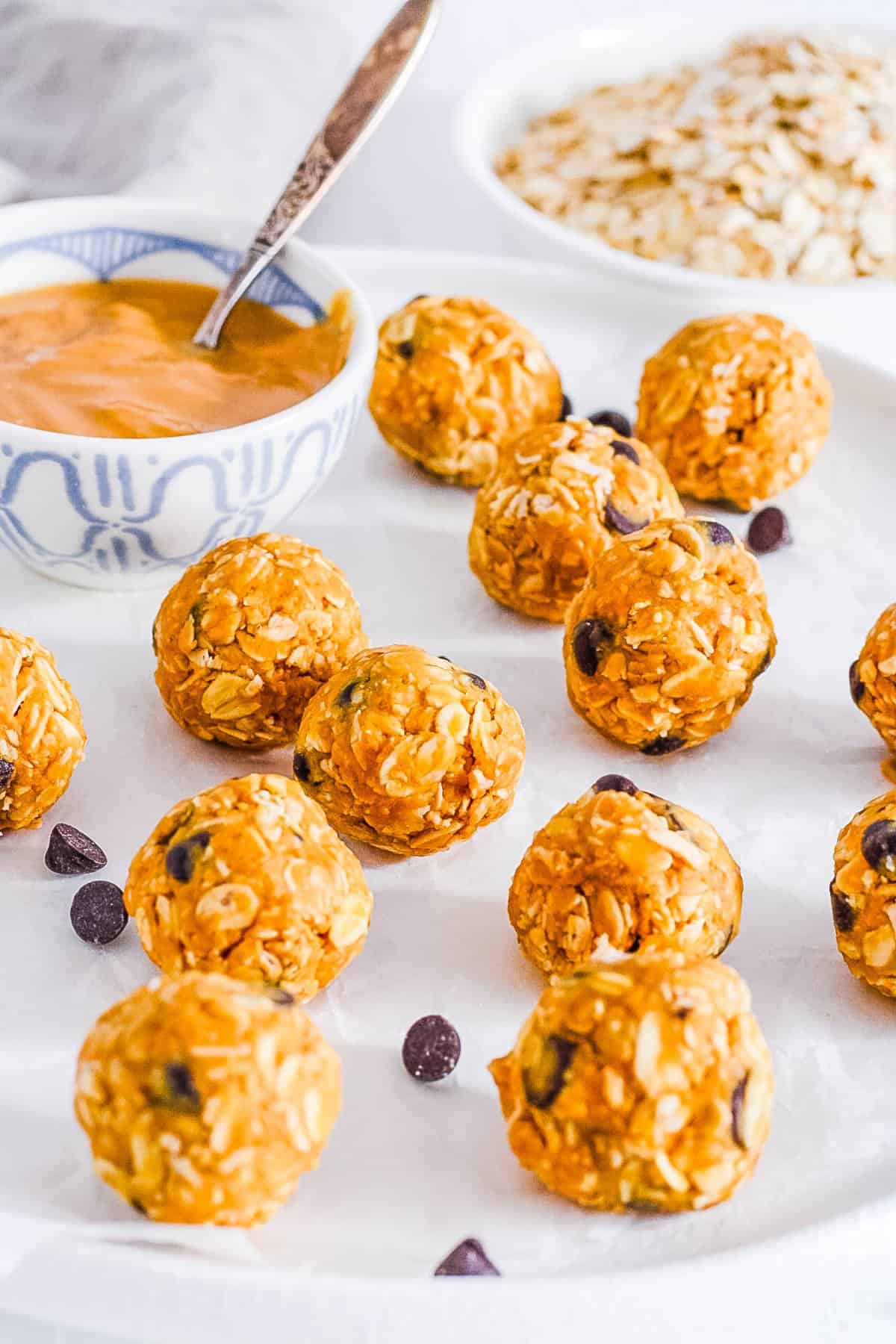
Indulge in my delicious no-bake peanut butter bliss balls, affectionately called “cookie dough bites” by my daughter. They taste like dessert, but are totally guilt-free and nutrient-rich! I love bliss ball recipes like this one because they come together quickly, and always satisfy my sweet tooth!
With only five simple ingredients and just ten minutes of prep time, bliss balls are a perfect option for busy days. I especially love making a huge batch at the beginning of the week, and enjoying them all week long for ultimate convenience. I find that they taste even better the next day, once they’ve had time to chill in the fridge for a while longer!
These protein balls with peanut butter are such a fun treat for any time of day! I really love how versatile they are – I’ll often use them as part of a quick breakfast, for packing in my kids’ lunches, or as a mid-afternoon snack.
Made with natural peanut butter, hearty oats, and a touch of pure maple syrup, I’ve crafted these bliss balls to be as healthy as possible. You won’t find any refined sugar here, even with these healthy swaps they still taste just like cookie dough. And each ball has only 90 calories and 3 grams of sugar!
I’ve also made sure that these wholesome ingredients can come together with minimal equipment required. No need to deal with your bulky food processor and spend all that extra time cleaning!
And my all time favorite thing about this recipe is that it’s a great way to involve kids in the kitchen. My kids have so much fun helping me out and adding in their own special twists.
Your family can also customize them in so many different ways, changing things up based on your preferences! I’ll share my favorite variations later in this post (like my peanut butter bliss balls with protein powder)!
Latest Recipe Video!
🥘 Ingredients
My easy peanut butter bliss balls recipe calls for just 5 nutritious ingredients, all easily found in your pantry or local grocery store. Here’s what you need:
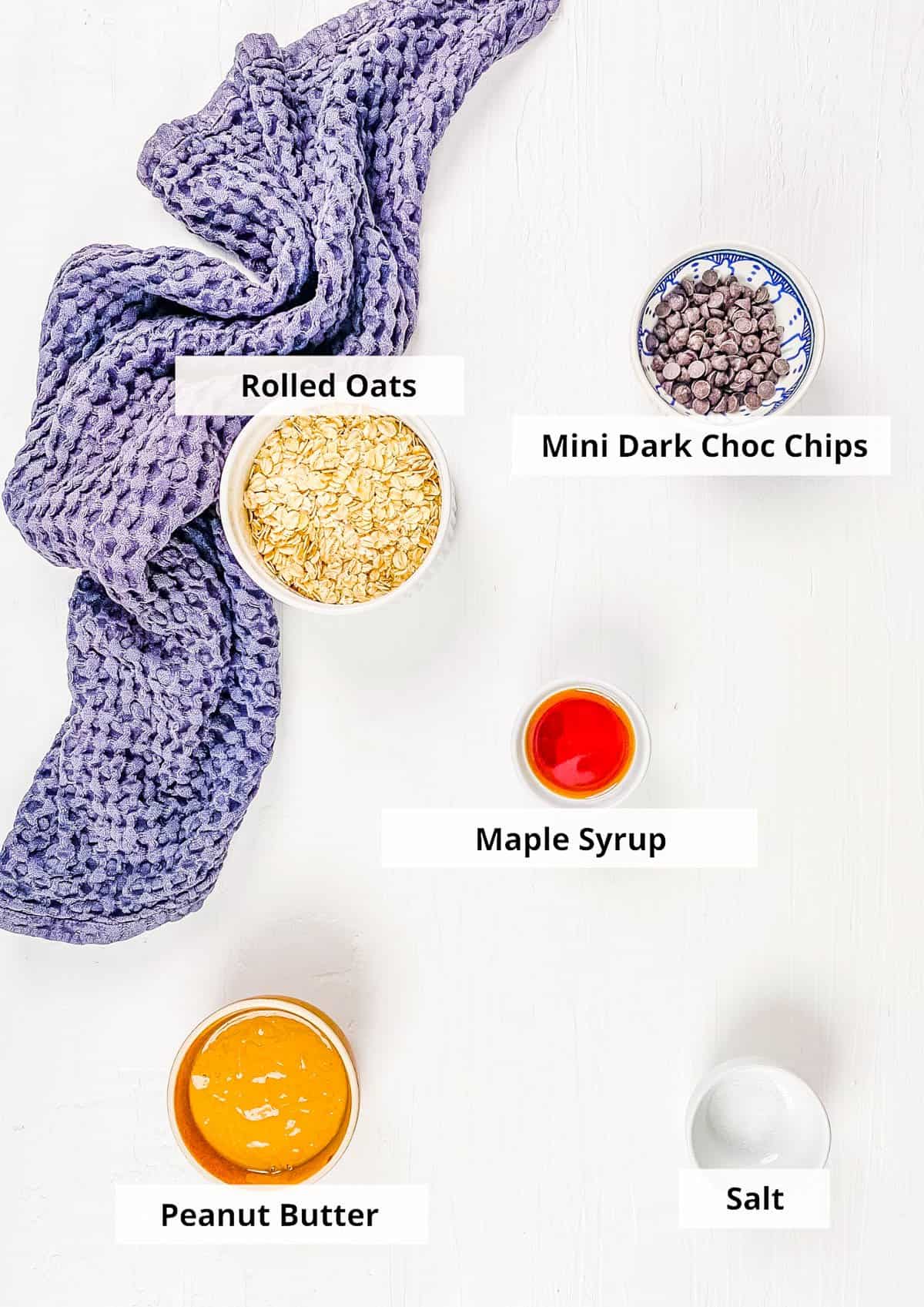
Oats: I’ve found that rolled oats work best for these kid-friendly bliss balls. I don’t recommend using oat flour or quick oats as it won’t have the same texture as whole oats, and won’t hold up as well.
Natural Peanut Butter: I use creamy peanut butter to bind all the ingredients together and add a boost of protein to these energy bites. If you don’t have peanut butter, try almond butter as a 1:1 substitute. Other nut butters (like cashew butter or a mixed nut butter) should also work in place of peanut butter, but the bites might have a slightly different consistency since some nuts create a thinner or runnier butter than others!
Dark Chocolate Chips: I prefer using dark chocolate chips for a healthier choice. These can be regular or mini chocolate chips. To keep this recipe vegan-friendly, I’ll use dairy-free chocolate chips. If you don’t need these to be vegan, then semisweet, white chocolate, or milk chocolate chips are all yummy options.
Maple Syrup: The only added sugar is natural maple syrup which gives the bliss balls a slightly sweet taste. If you don’t have maple syrup on hand, agave, raw honey, or vegan honey work.
Vanilla Extract: Pure vanilla extract brings out the richness of the chocolate. Sometimes I also add a pinch of salt to really enhance the sweetness. For a nutty flavor, try using almond extract.
🔪 How To Make Peanut Butter Bliss Balls
My vegan no bake peanut butter balls are so easy to make – they’re ready in just 3 simple steps. Let me show you how to make these healthy dessert balls:
Combine Ingredients: In a large bowl, using a wooden spoon, I start by stirring together the oats, peanut butter, chocolate chips, maple syrup, vanilla, and salt until combined.
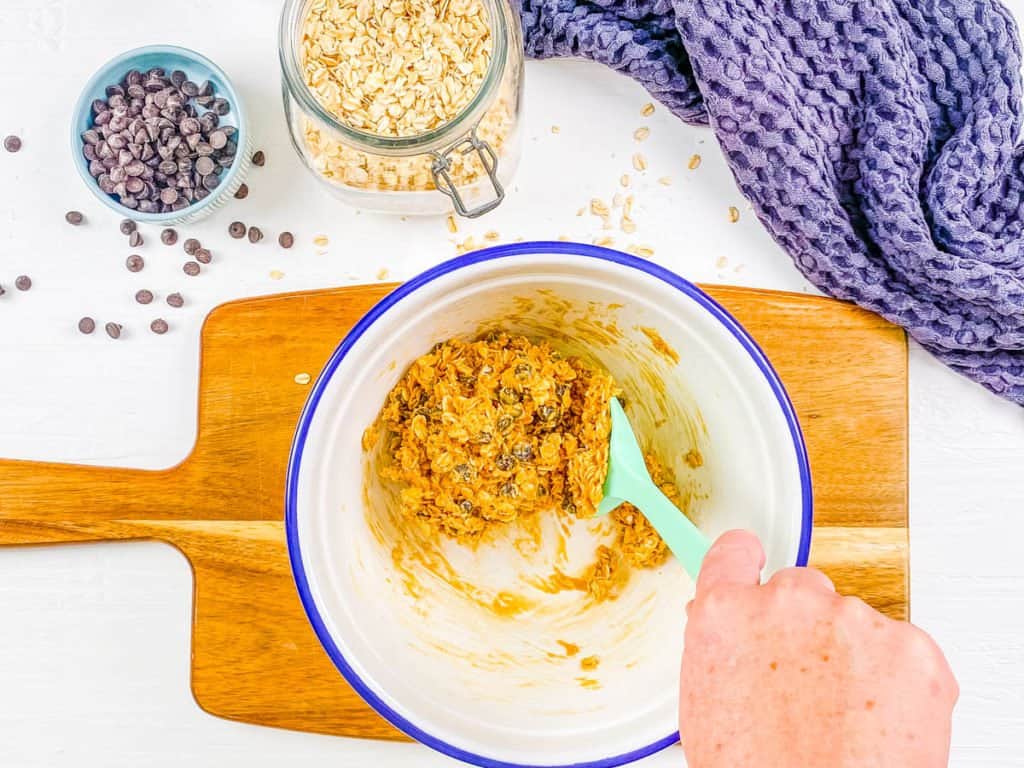
Form The Bliss Balls: Next, I line a baking sheet with parchment paper. Taking small handfuls of the mixture, I roll them into small balls 1-2 inches in size – about the size of a golf ball or ping pong ball. I prefer to use a cookie scoop to make this step extra easy. Place each ball onto the baking sheet.
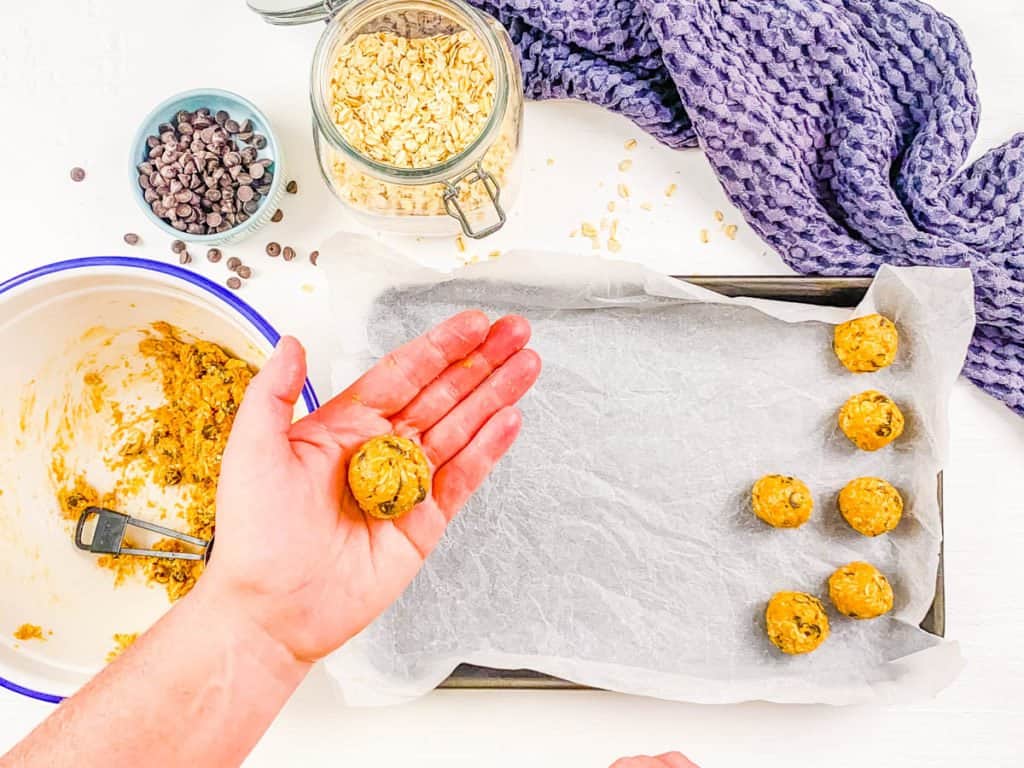
Let The Balls Set: Once rolled, I refrigerate these peanut butter snack balls for 30 minutes or until solid.
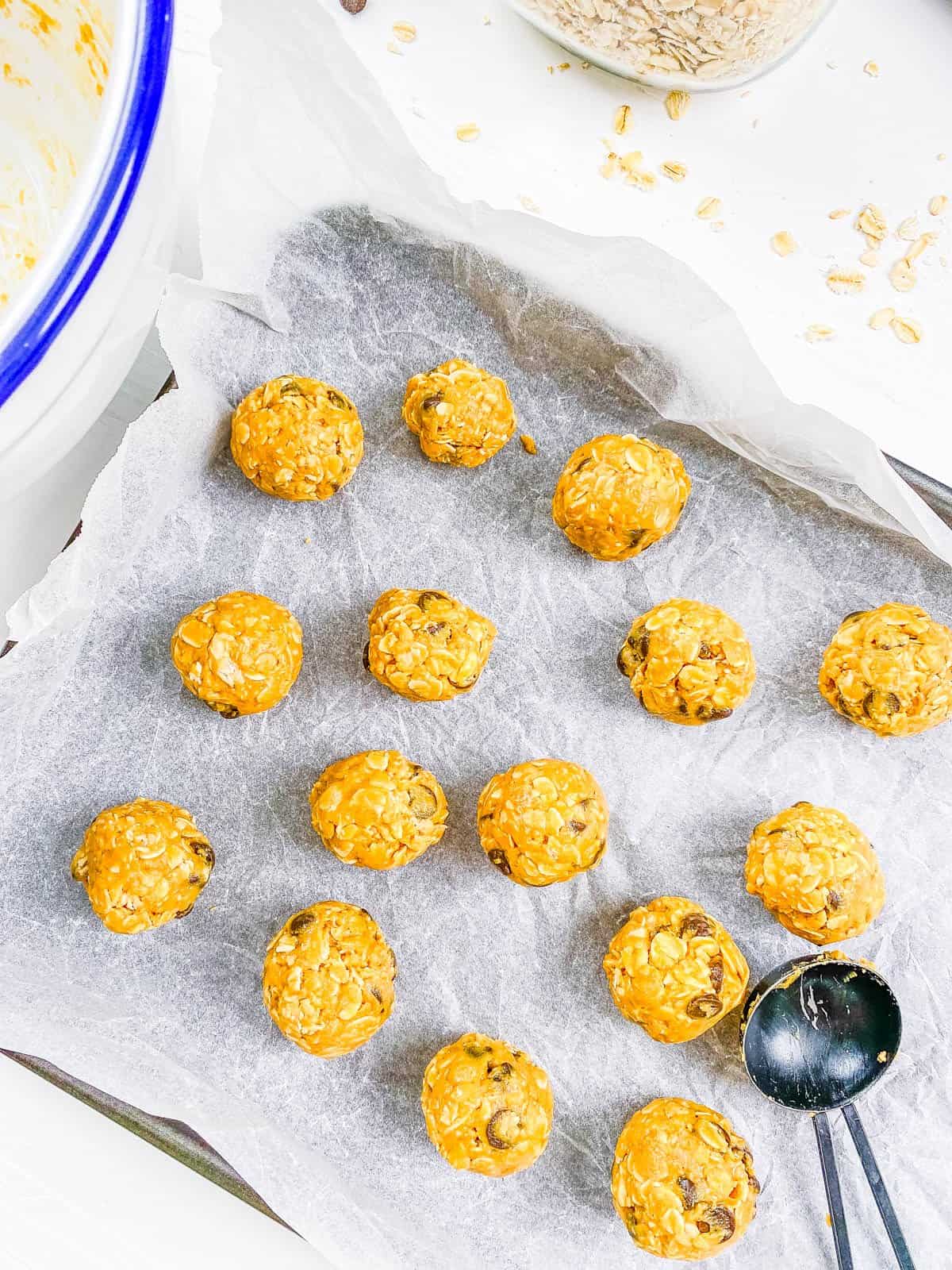
My #1 Secret Tip for this recipe is to make sure you measure ingredients precisely, with the right ratio of wet to dry ingredients.
While there is a little wiggle room with these bliss balls due to them being a no-bake recipe, I recommend being precise with all measurements to ensure ensures that the mixture has the right consistency to hold together without being too sticky or crumbly.
The creamy peanut butter is critical as the binding ingredient for these bliss balls, and I find it to be especially important to measure correctly. Too much or too little will throw the whole recipe off, leading to a mixture that is either too wet and sticky or too dry and crumbly.
After trial and error, I have found that achieving this balance is important for forming perfect bliss balls that stay intact and have a great texture.
Other Tips To Keep In Mind:
- Use The Right Tools: I like to use a cookie scoop to get all of these no-bake bliss balls the same size and to help my hands stay mess free!
- Check The Oats: If you or someone in your family is gluten intolerant, be sure to check the packaging on your oats for gluten-free certification. Some oats can be at risk for contamination with gluten substances.
- Involve The Kiddos: My kids love to help out in the kitchen, and this no-bake recipe is perfect for kids of all ages! They can learn how to measure out ingredients, combine ingredients, and roll the mixture into perfect ball shapes!
- Adjust For Moisture: If the dough seems too wet to mold into balls, consider adding a tablespoon or two of oat flour or almond flour. This will help to firm the mixture up so that it holds its shape and doesn’t stick to your hands.
- Bliss Balls For Kids: If you want to make these as toddler peanut butter balls I recommend reducing or omitting the sugar! You might also want to cut them into smaller bites when serving.
📖 Variations
I’ve perfected a few easy swaps and add-ins for when I’m looking to switch up the taste or texture a bit with these healthy kid-friendly bliss balls. There is something for any occasion! Here are my favorite variations:
Peanut Butter Protein Balls: If you want to turn these peanut butter protein bliss balls, consider adding a scoop of vegan vanilla protein powder to the batter before mixing it. You can use up to 2 scoops of protein powder, depending on the flavor of the protein powder you use. Sometimes I also add 1 tablespoon of ground chia seeds, flax seed, or hemp seeds for an extra boost of protein and healthy fats.
Chocolate Bliss Balls With Peanut Butter: For a double serving of chocolate, add a tablespoon of cacao or cocoa powder to the batter before mixing. I love the rich and indulgent flavor that this gives this recipe! I serve this as a healthy kids dessert often!
Peanut Butter Date Bliss Balls: For a sweeter flavor, I like to add a ¼ cup of Medjool dates, soaked and drained. I use a food processor when adding dates so that they are completely incorporated with the peanut butter and oats.
Sugar-Free Bliss Balls: If you want to make these no-bake peanut butter balls truly sugar-free, you can omit the maple syrup and use sugar-free chocolate. I think they still taste pretty good thanks to the natural sweetness from the vanilla and chocolate chips! If you are making these peanut butter balls for toddlers, this is a good option.
Mix-Ins: Add your favorite mix-ins to give these peanut butter energy balls some texture. I find that crushed walnuts, pecans, peanuts, sunflower seeds, and cacao nibs work really well in this recipe. My other favorites are dried fruit like cranberries, raisins, dried apricots, and shredded coconut. I also love adding spices like a pinch of sea salt, cinnamon powder, nutmeg, or pumpkin pie spice into the mixture. When making these as toddler protein balls, be mindful of the size of the nuts and dried fruit.
🍽 Serving Suggestions
While I love these healthy bliss balls with peanut butter on their own for an easy grab-and-go snack or healthy dessert, it can be so fun to get creative with other ways to serve these! Try some of these ideas:
Toppings: For a decadent dessert I love to drizzle chocolate sauce or caramel sauce (like the one on this no-bake salted caramel cheesecake) over these no bake snacks!
Ice Cream: My kids love to mix these no bake peanut butter dessert balls into tofu ice cream for a delicious treat.
Drinks: Energy balls can be found at a lot of coffee shops nowadays, so it only feels right to create those coffee shop vibes at home! I have been loving these balls with my oatmilk honey latte or iced ube latte! You can also do a creamy mixed berry smoothie alongside these protein balls for kids as an afternoon snack.
With Other Energy Bites: Make a spread of energy bites and serve these alongside my vegan protein balls, peanut butter date balls, and these homemade lara bars! I love this idea for parties and special occasions!
🫙 Storage Instructions
Room Temperature: I store these dairy free peanut butter balls in an airtight container at room temperature for up to 3 days.
To Refrigerate: After placing in an airtight container or resealable plastic bag, I’ll store these in the fridge for maximum freshness. They’ll be good for about one week!
Freezer: I don’t recommend storing these vegan energy balls in the freezer as they won’t taste as good when defrosted.
❓Recipe FAQs
The best type of peanut butter to use is natural peanut butter with no added sugars, oils, or preservatives. I recommend looking for a brand that has just one ingredient listed: peanuts. You can also use a brand that has peanuts and salt listed as the only two ingredients.
There are two ways I’d recommend adjusting this recipe if your mixture is too dry: 1) Add more peanut butter – it’ll help bind the ingredients and add moisture. 2) Add a little bit of coconut oil, maple syrup, or even a touch of applesauce – these ingredients will add moisture and flavor to your peanut butter oat balls!
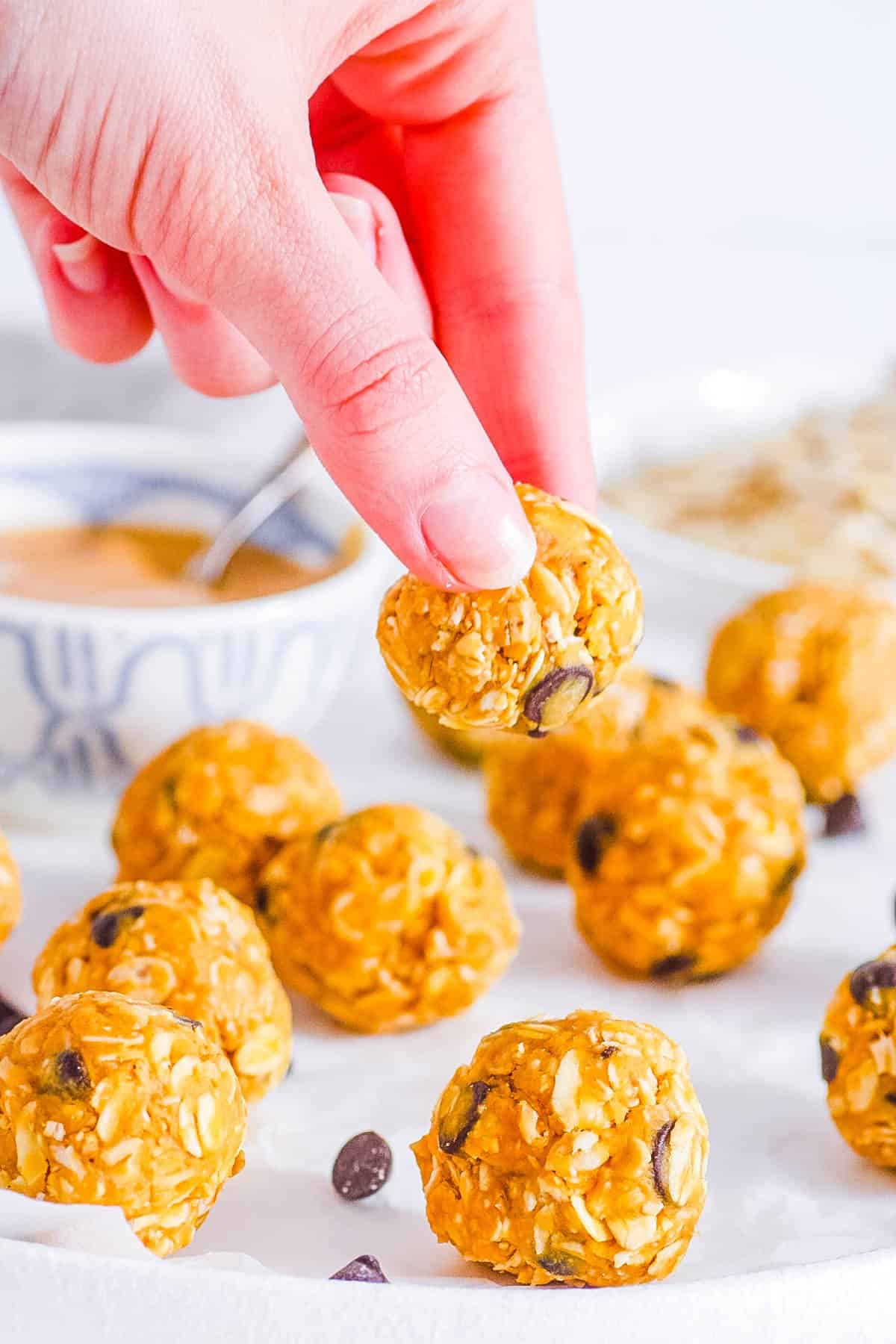
Want to Save This Recipe?
Enter your email & I’ll send it to your inbox. Plus, get great new recipes from me every week!
By submitting this form, you consent to receive emails from The Picky Eater.
Love this plant based dessert recipe? Please leave a 5-star rating 🌟 in the recipe below and/or a review in the comments section further down the page!
You can also FOLLOW ME on FACEBOOK, INSTAGRAM, and PINTEREST to see more delicious, healthy, family-friendly food, and if you have any questions, I’m here to help!
📋 Recipe Card
Healthy No-Bake Peanut Butter Bliss Balls
My healthy, easy no bake peanut butter bliss balls are loaded with creamy peanut butter and chocolate flavor, making them a hit with both kids and adults alike. Enjoy these as an on-the-go breakfast, wholesome snack, or healthy dessert alternative! They’re also dairy-free, vegan, gluten-free, and low in sugar, making them ideal for a variety of dietary preferences.
Servings: 16 balls
Calories: 93kcal
-
In a large bowl, using a wooden spoon, stir together the oats, peanut butter, chocolate chips, maple syrup, vanilla, salt (and protein powder, if using) until combined.
-
Line a baking sheet with parchment paper.
-
Taking small handfuls of the mixture, roll them into small balls 1-2 inches in size. Or you can use a cookie scoop. Place them onto the baking sheet.
-
Refrigerate the bites for 30 minutes or until solid. Store in an air-tight container in the fridge (they will last at least 1 week, and likely 2!)
- Use The Right Tools: Use a cookie scoop to get all of the balls the same size.
- Check The Oats: If you or someone in your family is gluten intolerant, be sure to use gluten-free oats.
- Involve The Kiddos: This is such a great no bake recipe for kids to make – get them in the kitchen!
- Adjust For Moisture: If the dough seems too wet to mold into balls, consider adding a tablespoon or two of almond flour.
- Sugar Free: If you want to make these truly sugar-free, you can omit the maple syrup, and they will still taste pretty good.
- Peanut-Free: Use your favorite alternative nut butter or seed-based butter.
- Nutritional information includes protein powder. Note: for even more protein, use 1 scoop of vegan vanilla protein powder and 1 scoop of peanut butter protein powder.
Serving: 1ball | Calories: 93kcal | Carbohydrates: 8g | Protein: 4g | Fat: 5g | Saturated Fat: 2g | Polyunsaturated Fat: 1g | Monounsaturated Fat: 2g | Cholesterol: 4mg | Sodium: 43mg | Potassium: 92mg | Fiber: 1g | Sugar: 3g
Health
Federal Experts Talk Bird Flu ‘What Ifs’ in WebMD Live Event

May 16, 2024 – Multiple U.S. agencies are working to contain the recent bird flu outbreak among cattle to prevent further spread to humans (beyond one case reported in early April) and use what we learned before, during, and after the COVID-19 pandemic to keep farm workers and the general public safe.
Fingers crossed, the bird flu will be contained and peter out. Or the outbreak could continue to spread among dairy cattle and other animals, threatening the health and livelihoods of farmers and others who work with livestock.
Or the virus could change in a way that makes it easier to infect and spread among people. If this happens, the worst-case scenario could be a new influenza pandemic.
With so many unknowns, WebMD brought together experts from four federal agencies to talk prevention, monitoring, and what the “what ifs” of bird flu might look like.
Communication with the public “about what we know, what we don’t know, and ways you and your family can stay safe is a priority for us at CDC,” said Nirav D. Shah, MD, JD, the CDC’s principal deputy director. “We at the federal level are responding, and we want the public to be following along.”
People should consult the websites for the CDC, FDA, U.S. Department of Agriculture (USDA), and the Administration for Strategic Preparedness and Response (ASPR) for updates.
It is essential to not only stay informed, but to seek trusted sources of information, Shah said during “Bird Flu 2024 – What You Need to Know,” an online briefing jointly sponsored by the CDC and WebMD.
An ‘Experimental Hamburger’
If one take-home message emerged from the event, it was that the threat to the general public remains low.
The retail milk supply is safe, although consuming raw or unpasteurized milk is not recommended. “While commercial milk supply is safe, we strongly advise against drinking raw milk,” said Donald A. Prater, DVM, acting director for the FDA’s Center for Food Safety and Applied Nutrition.
As for other foods, thoroughly cooked eggs are less risky than raw eggs, and the nation’s beef supply remains free of the virus as well.
For years, federal inspectors have purchased and tested meat at retail stores, said Eric Deeble, DVM, USDA deputy assistant secretary for the Office of Congressional Relations. So far, H5N1, the virus behind bird flu, has not been detected in beef.
The USDA took testing a step further and recently cooked ground beef from dairy cows in their lab. Using what Deeble described as an “experimental hamburger,” the agency showed cooking beef to 165 F or higher kills the virus if it ever becomes necessary.
The federal government now requires all cattle be tested and be free of bird flu virus before crossing any state lines. The government is also reimbursing farmers for veterinary care and loss of business related to the outbreak, and supply personal protective equipment (PPE) like gloves, masks, and face shields to workers.
Vaccination Not Recommended Now
Federal scientists know enough about H5N1 virus to create vaccines against it quickly if the need arises. It’s more about planning ahead at this point. “Vaccines are not part of our response right now,” said David Boucher, PhD, director of infectious diseases preparedness and response at the Administration for Strategic Preparedness and Response.
If the virus changes and becomes a bigger threat to people, “we have the building blocks to produce a vaccine,” Boucher added.
An event attendee asked if the seasonal flu shot offers any protection. “Unfortunately, the flu shot you got last year does not provide great protection from the avian flu,” Shah responded. “It might do a little bit … but that is the vaccine for seasonal flu. This is something more novel.”
Treatments Stockpiled and Ready
Antiviral medications, which if given early in the course of bird flu infection could shorten the severity or duration of illness, are available now, Shah said. The dairy farmer who was infected with bird flu earlier this year responded to oseltamivir (Tamiflu) treatment, for example.
When it comes to bird flu symptoms, the fact that the only infected person reported so far this year developed pink eye, also known as conjunctivitis, is interesting, Shah said. Officials would have expected to see more typical seasonal flu symptoms, he added.
“Influenza is not a new virus,” Boucher said. “With this strain of influenza, we are not seeing any genetic markers associated with resistance to antivirals. That means the antivirals we take for seasonal influenza would also be available if needed to treat H5N1.”
ASPR has stockpiled Tamiflu and three other antivirals. “We do have tens of millions of courses that can be distributed around the country if we need them,” he added.
“Influenza is an enemy we know well,” Boucher said. That is why “we have antivirals ready to go now and many types of PPE.”
Science in Action
The feds intend to stay on the case. They will continue to monitor emergency department visits, lab test orders, and wastewater samples for any changes suggesting a human pandemic risk is growing.
“While we’ve learned a great deal, there are still many things we do not know,” Deeble said.
Shah added, “As in any outbreak, this is an evolving situation and things can change. What you are seeing now is science in action.”
For the latest updates on bird flu in the United States, visit the CDC’s H5N1 Bird Flu: Current Situation Summary website.
-

 African History4 months ago
African History4 months agoBlack History Facts I had to Learn on My Own pt.6 📜
-

 African History4 years ago
African History4 years agoA Closer Look: Afro-Mexicans 🇲🇽
-

 African History1 year ago
African History1 year agoPROOF AFRICAN AMERICANS AIN'T FROM AFRICA DOCUMENTED EVIDENCE
-

 African History2 years ago
African History2 years agoHow Did Normal Medieval People Survive Winter? | Tudor Monastery Farm | Chronicle
-

 African History4 years ago
African History4 years agoA Closer Look: Afro-Mexicans 🇲🇽
-

 African History3 years ago
African History3 years agoWhat happened to the many African Kingdoms? History of Africa 1500-1800 Documentary 1/6
-

 African History3 years ago
African History3 years agoThe Entire History of Africa in Under 10 Minutes – Documentary
-

 African History2 years ago
African History2 years agoAFRO MEXICO: Black History In Mexico!

